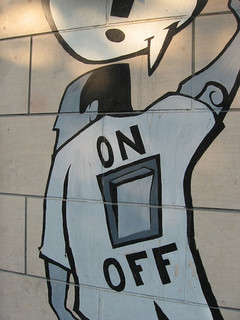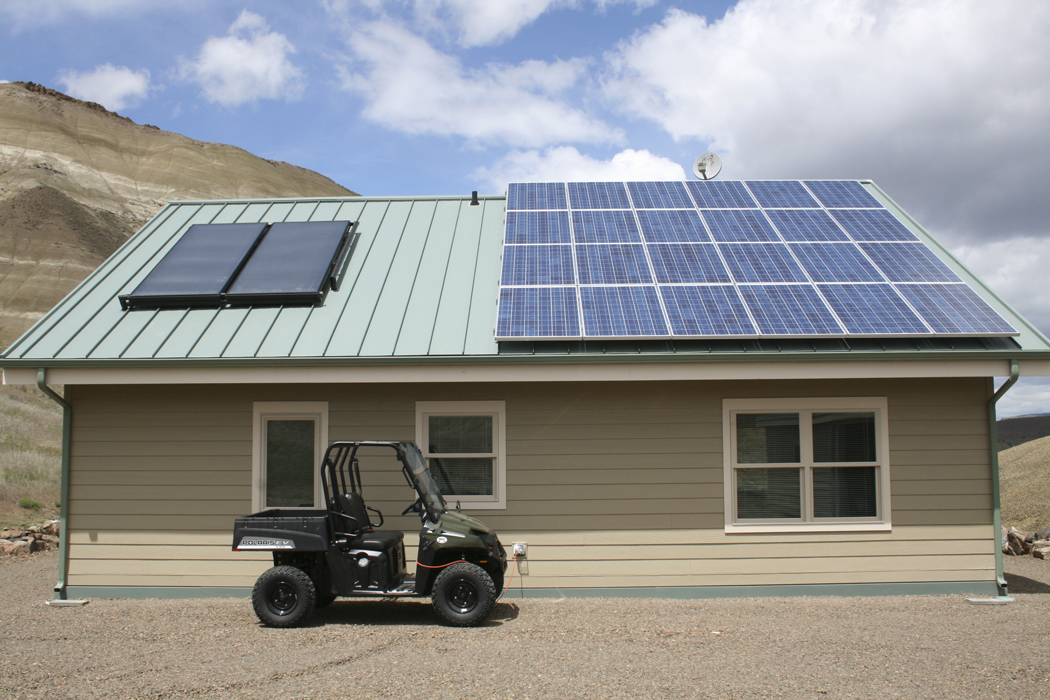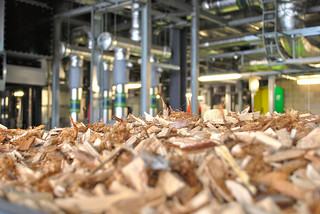This is a growing area of research and activity for customer energy efficiency programs. Behavior is clearly a cornerstone of energy efficiency: it affects the purchases we make, the buildings and systems we design, and how we use energy-consuming equipment. To leverage technology and practices for greater savings, energy professionals can use social science to understand both how customers use energy and how programs can benefit customers. This goes beyond simply providing information. Understanding how customers think about their energy use can help programs select technology and engage participants in reducing their energy use through energy efficiency improvements. Considering energy users as members of communities and social networks suggests some…
-
-
The Painted Hills Go Green
The Park Management Team at John Day Fossil Beds National Monument successfully pursued building an unconventional, state-of-the-art zero-energy home as a replacement for the ranger residence at the remote Painted Hills Unit The goal, which is to make the park’s Painted Hills Unit carbon neutral and energy self sufficient in housing, administration and transportation, was close to being realized with the completion of the new residence. This house, built at a cost comparable to standard construction, not only eliminates utility costs to the ranger in residence, but it also exposed local contractors and the public to a building method far more energy efficient than anything they were familiar with. The…
-
Biomass Energy in John Day
Generations of sawlog harvesting can leave commercial forests choked with forestry leftovers: sapling-sized and un-merchantable trees, which need to be thinned to make way for healthy growth. In January 2009, Grant County government began an investigation to see whether there was enough of this type of woody biomass in the area to support a pellet plant, and what that plant might look like. The Grant County Fiber Utilization Study took more than 4 months and enlisted the help of several local, state and federal agency employees, foresters and business people. When complete, the study was shared with individuals, government agencies, legislators and congressional delegates. Because the county had a completed…
-
Where were you in 1991?
Solar Energy International Was Just Getting Started Teaching the World About Renewable Energy Technologies. Solar Training and Renewable Energy Education – Celebrating 20 Years For 20 years, Solar Energy International has been dedicated to hands-on and online solar training and renewable energy education in wind, micro-hydro, sustainable building and developing world technologies. Solar Energy International also works with grassroots and development organizations to promote sustainability and improve quality of life worldwide through viable outreach programs. SEI Training Programs Through our Renewable Energy Education Program (REEP), SEI offers hands-on workshops and online courses in solar PV, wind, micro-hydro, solar hot water and natural home building. SEI Development Work SEI works cooperatively with grassroots and…
-
Community Solar Farms
Here’s a great idea that makes so much sense you wonder why it hasn’t happened long before now. Community Solar Farms. Solar panels are appearing on more and more roofs. But what about people who rent, live in a condominium, have shaded roofs, who might move or live in a historic district or home owners association? This is the majority of Americans! In several states, people can own solar panels in a common array called a solar garden,supplying their homes through the existing power grid. The Solar Garden Institute out of Westminster, CO advocates for community based energy development through legislation in several states, and the federal SUN (Solar Uniting…
-
Purple Wind Turbines May Be Less Likely to Harm Birds
Researchers Chloe Long, Dr. James Flint, and Dr. Paul Lepper, all colleagues at the Loughborough University in the United Kingdom, conducted experiments to learn whether color might play a role in attracting insects to wind turbines. They measured how many insects were attracted to different colored cards laid out in random order next to a 43-foot-tall three-blade wind turbine. The experiments showed that insects are most attracted to yellow followed by white and light gray. The researchers discovered that the color least attractive to insects was purple and reasoned that wind turbines painted purple would likely kill fewer birds and bats: Birds and bats are often hit when…
-
Fiber Cells + Pokeberries = Solar Power
Here’s an exciting article by Alicia W. Roberts, Wake Forest University and posted on RenewableEnergyWorld.com website. Seems Wake Forest University holds the first patent for fiber-based photovoltaic, or solar cells, granted by the European Patent Office in November. A spinoff company called FiberCell Inc. has received the license to develop manufacturing methods for the new solar cell. And now the scientists at the University’s Center for Nanotechnology and Molecular Materials have used the red dye made from pokeberries to coat their efficient and inexpensive fiber-based solar cells. The dye acts as an absorber, helping the cell’s tiny fibers trap more sunlight to convert into power. These low cost fiber cells…
-
Portland’s Coal Problem
According to Mayor Sam Adams,Portland receives 68 percent of its power from non-renewable fossil fuels and over 44 percent is produced by coal. A great deal of that coal-fired power generation originates in the Rocky Mountains. Oregon’s only coal-fired electric power plants is located in Boardman, Oregon. It is the state’s largest stationary source of carbon dioxide, sulfur dioxide, nitrogen oxide and other pollutants including mercury. PGE owns 65 percent of the Boardman coal-fired power plant and is seeking to submit an alternative operating plant that would phase out the facility or switch to non-coal fuel by 2020. In January, Adams announced his support of PGE’s work to rethink the…
-
Power to the People
Community effort in Southeast Portland brings solar within reach for many. PORTLAND, Ore. — September 16, 2009 was the deadline for Portland homeowners to become part of the very first Solarize Portland project — a grassroots effort that’s making it easier to go solar for less through the power of community. What began as the idea of one homeowner in Southeast Portland, has now grown to include 335 neighbors. The number is well over the original project goal of 50 participants. Led by Southeast Uplift Neighborhood Coalition and Energy Trust of Oregon, the group is going through the process together — from learning how solar works, to installing systems on…
-
Palm Oil Plantations Wrecking Asian Rainforests
Palm oil, listed as, "vegetable oil," in many supermarket food products is responsible for cultures, ecosystems, and animals, like the orangutan, tiger, and sun bears being pushed to extinction, and the problem is getting worse.



